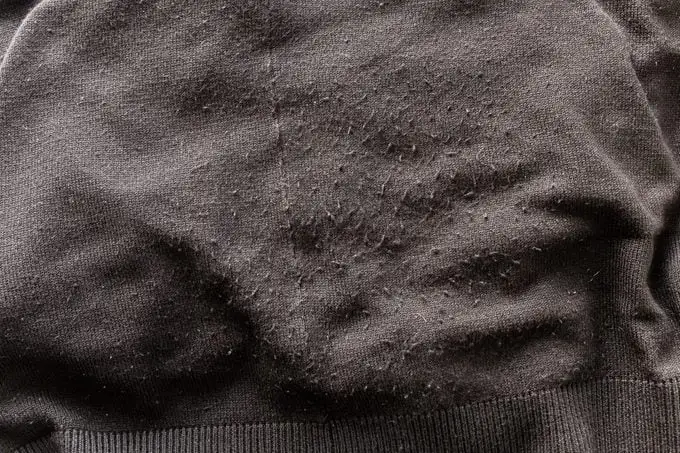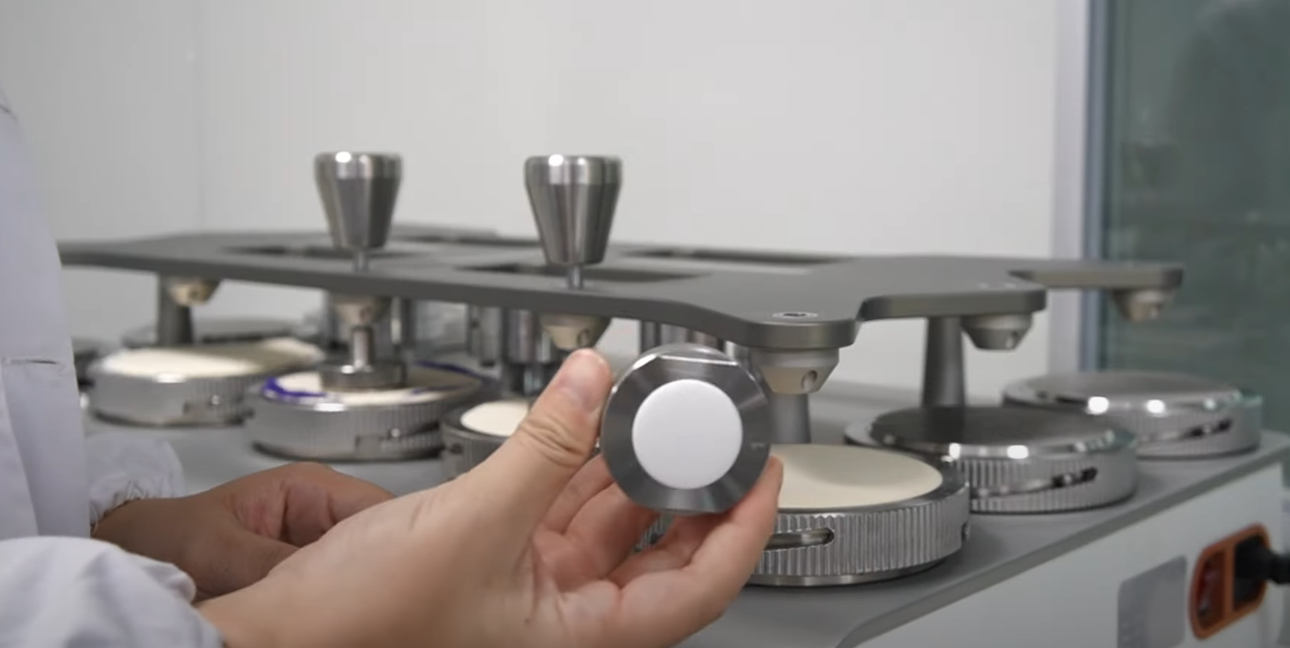What Is A Good Martindale Score?
What Does Abrasion Resistance Mean?
A good Martindale score specifies strong abrasion resistance in a fabric. Abrasion resistance is the capability of fabric to endure damage. This is caused by scratching, rubbing, and friction over time. In textiles, needed materials are subject to repeated friction in daily usage. The Martindale tests are also known as the Martindale abrasion test. It is a standard method for examining this property. Today we share you with the knowledge of the Martindale Test and Score.
Throughout the Martindale test, a bit of fabric is subjected to repeated rubbing in opposition to a general abrasive surface under controlled conditions. The test measures how many cycles of erosion the material can withstand earlier than showing signs and symptoms of wear and tear, along with pilling, fuzzing, or visible damage. A higher Martindale score indicates extra sturdiness and resistance to abrasion.
The significance of an excellent Martindale score lies in the toughness and quality of the material. Fabric with higher Martindale rankings is often favored for upholstery, material, and different programs in which sturdiness is essential. They’re much more likely to preserve their look and structural integrity over time, despite the common use and exposure to friction. Therefore, when choosing fabric for diverse functions, considering their Martindale score can assist in ensuring excellent performance and durability.
What Does Pilling Resistance Mean?
Pilling resistance refers to the capability of a material to resist the formation of pills. These are small, tangled fibers that collect on the floor of textiles. Then, it results in a tough or bobbled appearance. Pilling generally occurs in fabric made from herbal fibers like cotton, wool, and linen. In addition to synthetic fibers, including polyester and acrylic, they can be used during wear and tear.
Fabrics with excessive pilling resistance are much less in all likelihood to increase pills. It retains a clean and appealing look for an extended length. Manufacturers use various methods to decorate pilling resistance at some point in fabric production. It consists of fiber choice, yarn spinning techniques, and surface redress.
One measure of pilling resistance is the Martindale check, which evaluates a fabric’s potential to resist abrasion and friction. Fabric with better Martindale scores is commonly more resistant to pilling, as they can bear repeated rubbing except for significant fiber breakage or floor abrasion.
Moreover, material blends combining distinctive fibers can enhance pilling resistance. For instance, mixing polyester with natural fibers like cotton or wool can improve durability and reduce pilling, as polyester fibers are much less liable to form pills.
Regular protection and care also play a position in maintaining a material’s pilling resistance. Mild washing, warding off harsh detergents, and minimizing friction during use. It can assist in lengthening the existence of the fabric and decrease the probability of pilling.
Pilling resistance is a desirable characteristic of fabrics. It indicates their capability to maintain an easy and neat look over time by resisting the formation of unsightly pills.
What is the Difference Between Abrasion Resistance and Pilling Resistance?
Abrasion resistance and pilling resistance are each important properties of textiles. However, they deal with exceptional factors, such as a material’s sturdiness and performance.
Abrasion resistance refers to a cloth’s ability to withstand harm brought on by rubbing, scratching, or friction through the years. This asset is imperative in textiles due to the fact fabrics are subjected to diverse sorts of mechanical wear during regular use.
For example, upholstery fabric on fixtures might also experience abrasion from sitting. At the same time, garb fabric may rub towards surfaces throughout the movement. The Martindale test is a not unusual method used to measure abrasion resistance, quantifying what number of cycles of erosion a fabric can endure earlier than displaying signs and symptoms of wear, including pilling, fuzzing, or seen damage.
On the other hand, pilling resistance, in particular, addresses the formation of tablets at the cloth’s surface. Pills are small, tangled fibers that collect through friction and abrasion, resulting in a tough or bobbled look. Fabrics with excessive pilling resistance are less liable to developing drugs, keeping a smooth and attractive floor over the years. Pilling resistance may be motivated by elements such as fiber kind, yarn production, fabric finishing redress, and fabric blends. At the same time, as a few fabrics are more resistant to pilling, manufacturers may appoint techniques to enhance this belonging.
The important difference between abrasion resistance and pilling resistance lies in the specific forms of wear they address. Abrasion resistance focuses on the overall potential of fabric to face up to harm from rubbing and friction, whilst pilling resistance focuses on the prevention of pill formation on the fabric’s surface. At the same time, as both homes make contributions to a fabric’s sturdiness and durability, they’re evaluated and addressed in another way in fabric manufacturing and testing processes. Fabrics with excessive abrasion resistance may nonetheless increase capsules if they lack adequate pilling resistance, highlighting the importance of considering both properties whilst selecting textiles for various applications.
What are Martindale Abrasion and Pilling Tests?
The Martindale Abrasion and Pilling test is a broadly used approach for evaluating the durability and overall performance of textiles, especially in phrases of abrasion resistance and pilling resistance. It is named after the Martindale abrasion testing device, which is utilized to conduct the test.
- Martindale Abrasion Test
The Martindale abrasion test assesses a fabric’s resistance to abrasion, measuring its ability to withstand harm from rubbing, friction, and wear over the years. At some stage in the test, a sample of the fabric is subjected to repeated cycles of erosion towards a preferred abrasive surface, including wool or sandpaper. The test evaluates what number of cycles the material can bear earlier than showing signs and symptoms of wear, together with pilling, fuzzing, or seen harm. The consequences are commonly pronounced because of the number of cycles completed before particular wear criteria are met.
- Martindale Pilling Test
The Martindale pilling test evaluates a fabric’s resistance to pilling, which refers back to the formation of small, tangled fibers or tablets at the material’s surface due to friction and abrasion. On this test, the cloth pattern is rubbed in opposition to a chunk of cork or abrasive material within the presence of a trendy rubbing movement. The test measures the propensity of the material to develop capsules over the years and assesses the severity of pill formation based on predetermined criteria.
- Importance
The Martindale Abrasion and Pilling test provides precious insights into the sturdiness and overall performance of textiles, helping manufacturers, designers, and customers make informed selections about fabric selection and usage.
Fabric with better Martindale test ratings, indicating extra abrasion and pilling resistance are frequently desired for applications requiring durability, such as upholstery, drapery, and apparel.
- Application
Textile producers use the Martindale test throughout product development to evaluate and enhance cloth performance.
Designers and customers depend upon Martindale test results to pick out fabrics suitable for specific applications, making sure of sturdiness and pleasantness within the completed products.
Basic, the Martindale Abrasion and Pilling test serves as a vital tool within the textile industry, permitting objective evaluation of material overall performance and helping to ensure the production of long-lasting and wonderful textiles. You can also click and learn a detailed introduction to Martindale Method of Abrasion and Pilling Testing ISO 12945-2:2020
What is a Good Martindale Score?
A good Martindale rating varies depending on the meant use and requirements of the cloth. Generally, Martindale rankings suggest the durability and resistance to abrasion of a material. Here is a rough guide:
- Mild
Fabrics supposed for mild-responsibility use, together with ornamental pillows or occasional use upholstery, commonly have Martindale ratings ranging from 6,000 to 10,000 cycles.
- Medium
Fabrics appropriate for the medium-responsibility application, which includes residential upholstery or often used cushions, regularly have Martindale rankings starting from 10,000 to 15,000 cycles.
- Heavy
Fabric designed for heavy-obligation use, along with commercial upholstery or excessive-visitors regions like motel lobbies, public spaces, or offices, normally has Martindale ratings ranging from 15,000 to 30,000 cycles or extra.
- Settlement Grade
Fabrics supposed for settlement-grade applications, such as healthcare centers, restaurants, or transportation, require even higher Martindale scores, typically beginning from 30,000 cycles and above.
It is important to note that whilst better Martindale scores usually indicate greater sturdiness and resistance to abrasion, different factors, including fiber type, weave, and production, additionally impact a material’s performance and toughness. Additionally, unique business requirements or rules may dictate minimum Martindale necessities for sure applications.
In the long run, the precise Martindale score depends on the intended use and anticipated wear and tear of the cloth. Whilst choosing fabrics, it’s crucial to consider the meant application and choose a cloth with a Martindale score suitable for the extent of use and durability required.
Or you can also take this Martindale Score as a reference:
10,000 or less – Decorative
Use on cushions or accents.
Not suitable for general domestic use or furniture upholstery.
10,000 to 15,000 – Light Domestic
Use on occasional use furniture.
Dry clean only.
Fabrics are made from delicate yarns such as cotton silk.
15,000 to 25,000 – General Domestic
Use on main house furniture.
Suitable for everyday use.
Not suitable for recliners or a seat/back that puts a high level of stress on the fabric.
Not suitable for high-use furniture.
25,000 to 30,000 – Heavy Duty
Use on heavy-use domestic furniture.
Suitable for high levels of everyday use.
Suitable for recliners and motion furniture.
Suitable for light commercial use.
30,000 or more – Commercial Grade
Use on heavy-duty commercial/domestic furniture.
Suitable for any commercial environment.
Anything above 50,000 is regarded as the same and makes no meaningful difference in the durability of the fabric.
Is The Wyzenbeek Test The Same Thing?
No, the Martindale and Wyzenbeek tests are two completely different tests and cannot be compared to one another. The Wyzenbeek test is used primarily in North America and tests the fabric by rubbing the taut fabric with cotton duck fabric or abrasive wire back and forth in the warp and filling directions. This back-and-forth motion is called a double rub.

How Do You Choose A Pilling Tester?
Deciding on a pilling tester is a critical decision for industries worried about textiles, garments, or material production. Pilling testers evaluate the propensity of a material to form pills that are small, tangled balls of fiber that appear on the floor of a cloth. Those testers help in determining the durability and quality of textiles, ensuring they meet the desired requirements and consumer expectations. While selecting a pilling tester, several factors need to be considered to make sure that it suits the specific requirements of your application. Here’s a comprehensive manual to help you make a knowledgeable choice:
- Testing requirements
Determine which testing standards apply to your industry or place. Various businesses such as ASTM International, ISO, and AATCC provide recommendations for pilling testing. Ensure that the pilling tester you choose complies with relevant requirements to ensure accurate and dependable results.
- Kind of Tester
Pilling testers come in differing types, including Martindale, Random Tumble, and Round Locus. Every type provides precise testing techniques applicable to distinct fabrics and programs. Consider the type of material you’ll be testing and select a tester that aligns with your necessities.
- Potential and size
Examine the quantity of testing you anticipate and pick a pilling tester with the correct potential. Consider the size of the specimens you’ll be testing and ensure that the tester’s trying out region can accommodate them with ease.
- Ease of Use
Opt for a pilling tester that is user-friendly and easy to operate. Functions, together with intuitive controls, clear commands, and ergonomic format, can simplify the testing manner and enhance efficiency. For example, the Smartindale Martindale Abrasion and Pilling Tester is popular for its easy operation and you do not need to change the pins when changing the test mode from abrasion test to pilling test. you can do that by clicking the button on the operation screen.
- Sturdiness and Develop Quality
Look for a pilling tester made from long-lasting materials that may face up to frequent use and offer regular tests over time. Splendid production ensures reliability and toughness, lowering the need for frequent maintenance or alternatives.
- Precision and Accuracy
Accuracy is necessary in pilling testing to achieve dependable results. Choose a tester with particular mechanisms and calibration picks to ensure an accurate evaluation of fabric pilling resistance.
- Protection features
Prioritize safety functions to defend operators and prevent accidents throughout testing. Features including protection interlocks, emergency stop buttons, and shielding enclosures can minimize dangers and ensure safe working surroundings.
- Software programs and statistics control
Consider whether or not the pilling tester comes with software for records acquisition and evaluation. Superior software abilities can streamline trying out processes, facilitate data management, and generate complete reports for analysis and documentation.
- Price and finances
Evaluate your budget and examine the value of different pilling testers available in the marketplace. While it’s quintessential to live inside finances, prioritize fine and functionality to make certain that you get a reliable tester that meets your requirements.
- After-sales assistance and warranty
Choose a good producer or dealer that provides splendid after-income assistance, including training, technical help, and prompt servicing. Test the guarantee phrases to make certain insurance for any ability problems or defects.
- Person evaluations and recommendations
Research people critique and try to find recommendations from industry friends or professionals who’ve relished with pilling testers. Their insights can offer valuable guidance in deciding on the proper tester for your wishes.
By considering these factors and carrying out thorough studies, you may pick a pilling tester that meets your precise requirements and guarantees an accurate and dependable evaluation of fabric pilling resistance. Investing in the proper pilling tester is critical for maintaining pleasant requirements and meeting customer expectancies inside the textile and garment industry.
What is the Average Price of A Martindale Abrasion Tester?
The average rate of a Martindale Abrasion Tester can range extensively, relying on elements such as brand, model specs, functions, and further accessories. Generally, a fundamental Martindale Abrasion Tester, except for superior features or accessories, costs $3,000 to $8,000. However, extra advanced fashions with additional functionalities, which include digital controls, touchscreen interfaces, computerized test cycles, and integrated software for facts analysis, can range from $8,000 to USD 15,000 or more.
Moreover, the charge can also be inspired by the reputation and reliability of the producer or dealer, warranty terms, after-income help, and any customization preferences required to meet particular testing desires. Factors, together with testing standards compliance, testing capacity, and build quality, can also impact the overall cost.
It is necessary to think about your budget, testing necessities, and long-term wishes while evaluating the price of a Martindale Abrasion Tester. Investing in a remarkable tester from a good producer can ensure correct and reliable abrasion testing, leading to better manipulation and purchaser pleasure in industries inclusive of textiles, apparel, and fabric.
How to Improve the Abrasion Resistance and Pilling Resistance of Fabric?
Enhancing the abrasion resistance and pilling resistance of fabric is indispensable to ensure durability and sturdiness, especially in textiles used for garments, fabric, and other applications subject to wear and tear. Here are numerous strategies to enhance those properties:
- Fiber selection
Pick fibers are known for their sturdiness and resistance to abrasion and pilling. Synthetic fiber, which includes nylon, polyester, and acrylic, tends to provide higher resistance compared to natural fibers like cotton or wool. Mixing distinct fibers can also create a material with improved universal performance.
- Tight Weave or Knit
Opt for fabrics with a decent weave or knit shape, as this could decrease the tendency of fibers to loosen and form pills. Dense fabrics with closely packed fibers are much less at risk of abrasion and pilling, resulting in improved sturdiness.
- Cloth Finishes
Apply finishes or coatings to the material floor to beautify abrasion and pilling resistance. Finishes, including silicone or acrylic coatings, create a defensive layer that reduces friction and put on, thereby growing the cloth’s durability.
- Yarn construction
Use yarns with higher twist ranges or unique forms designed to enhance abrasion and pilling resistance. As an example, spun yarns with a tighter twist are less likely to fray or pill, even as filament yarns provide inherent energy and sturdiness.
- Chemical redress
Deal with the cloth with chemical retailers or additives that enhance its resistance to abrasion and pilling. Anti-pilling finishes can be applied to the material floor to prevent the formation of capsules, while anti-abrasion redress creates a defensive barrier in opposition to wear and tear.
- Testing and Quality management
Implement rigorous testing approaches to evaluate the abrasion and pilling resistance of fabric at some point in the manufacturing process. Accomplishing standardized tests, which include Martindale abrasion testing and pilling assessments, helps one become aware of areas for improvement and ensures that fabrics meet favored performance standards.
- Garment production
Be aware of garment construction techniques that decrease abrasion and friction points. Toughen high-wear regions, including seams, cuffs, and collars, with extra stitching or long-lasting reinforcements to save you premature wear and pilling.
- Care instructions
Offer purchasers proper care instructions to keep the cloth’s abrasion and pilling resistance through the years. Propose soft washing methods, heading off harsh detergents or agitation that can boost fabric deterioration.
By enforcing these techniques, producers can enhance the abrasion and pilling resistance of fabric, resulting in products that offer advanced durability and overall performance for diverse applications.
For more information on textile testing methods/standards
or textile testing machines, contact us:
What’s App: +86 180 2511 4082
Tel: +86 769 2329 4842
Fax: +86 769 2329 4860
Email: medium@chiuvention.com













